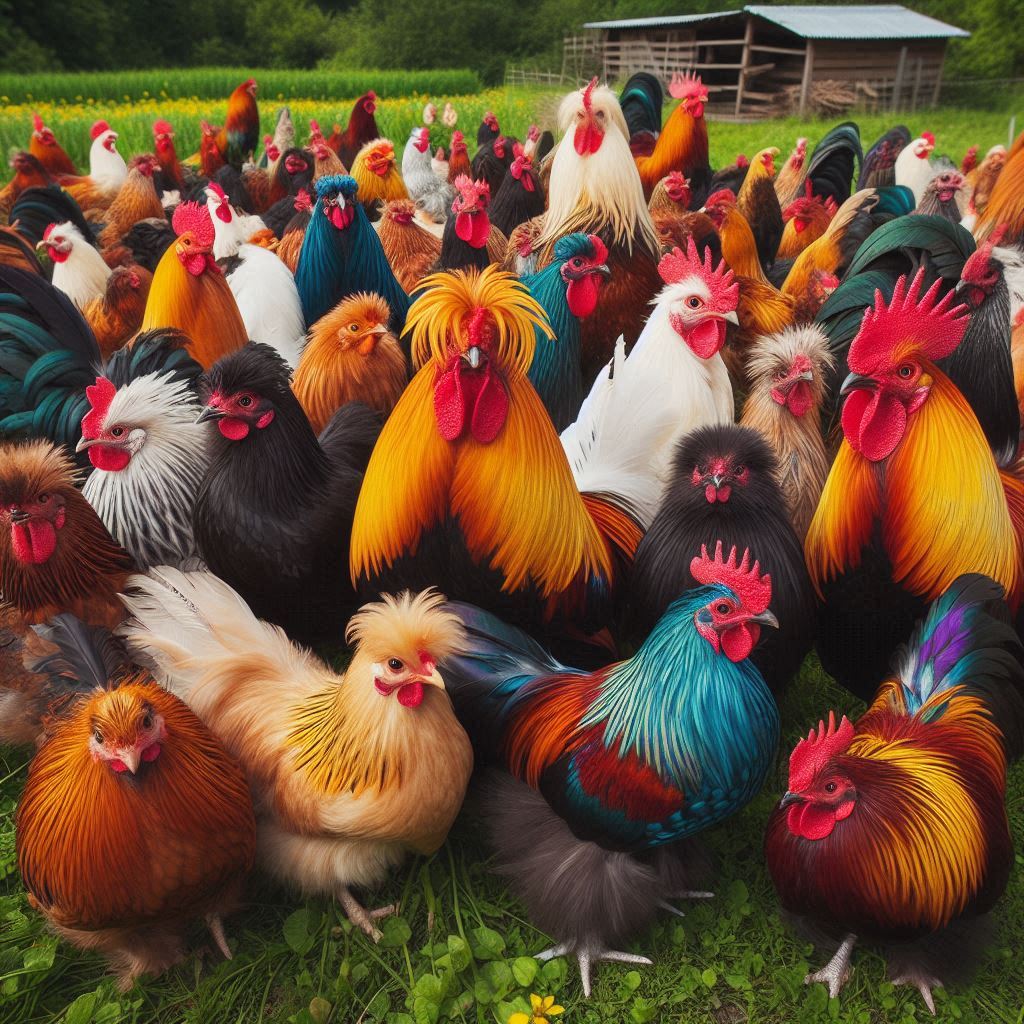The Unexpected Role of Sabong in Conservation
Sabong has deep roots, with its origins tracing back to ancient times. It’s an event that brings communities together, fosters camaraderie, and embodies a rich tapestry of history and cultural significance. Sabong enthusiasts have demonstrated a profound appreciation and respect for the lineage and genetics of their gamefowl.
Through meticulous and selective breeding programs, people are actively preserving rare and endangered chicken breeds that might otherwise disappear. This dedication to protecting the genetic integrity and diversity of game birds has inadvertently made sabong an unlikely ally in the field of bird conservation. Breeders invest significant time, resources, and knowledge to ensure the breeds’ health, vitality, and sustainability.
Selective breeding involves choosing the best specimens based on desirable traits such as strength, agility, and intelligence. This practice has led to a refined and robust lineage of gamefowl that is virtually unparalleled in their genetic makeup. These breeding programs often resemble scientific endeavors, with enthusiasts meticulously documenting pedigrees and lineage to ensure the purity and enhancement of the breed.
By preserving these breeds, Sabong enthusiasts are contributing to the broader genetic pool of poultry. This is especially important at a time when commercial poultry farming often favors a limited number of high-yielding breeds. This has led to a worrying reduction in genetic diversity. Sabong breeders’ efforts help counter this trend and provide protection against potential threats such as diseases that could wipe out more genetically uniform populations..
Understanding Selective Breeding in Sabong
Selective breeding in sabong is a meticulous and strategic process that involves choosing specific gamefowl with desirable traits to reproduce. This isn’t a quick or random process; it requires extensive knowledge, patience, and a keen eye for detail. Breeders invest years honing their skills and understanding the intricacies of avian genetics to produce superior gamefowl. The result is often a bird of exceptional quality, showcasing characteristics fine-tuned over generations.
Key Traits Considered in Selective Breeding
Physical Robustness. One of the primary traits breeders focus on is the physical robustness of the gamefowl. Attributes like strength, agility, and stamina are critical for performance in the sabong arena. A bird that exhibits exceptional physical prowess is more likely to excel in competitions, making these traits highly desirable. Selective breeding ensures that these attributes are passed down through generations, producing increasingly resilient and powerful gamefowl.
Temperament. The temperament of the gamefowl is another crucial factor. Breeders aim to strike a balance between aggressiveness and control. A bird that is too aggressive may be difficult to handle and train, while one lacking in aggressiveness may not perform well in competitions. The ideal gamefowl exhibits controlled aggression, allowing it to respond effectively in the heat of the moment while remaining manageable outside the arena.
Genetic Diversity. Ensuring genetic diversity is paramount to the selective breeding process. A wider gene pool helps avoid the pitfalls of inbreeding, which can lead to a host of genetic disorders and health issues. This genetic strength further supports the overall vitality and longevity of the breed.
The process of selective breeding in sabong is a testament to the dedication and expertise of breeders who have refined their methods over generations. Their commitment to excellence ensures that each successive generation of gamefowl is a step closer to perfection, in terms of performance and genetic health. This sophisticated approach to breeding highlights the deep connection between the cultural tradition of sabong and the scientific principles that underpin it. Through these efforts, breeders contribute to the preservation and enhancement of gamefowl lineages, ensuring the sport’s vibrancy and sustainability for future generations.
Why Preserve Rare Chicken Breeds?
 Rare and endangered chicken breeds hold irreplaceable genetic material crucial for the overall health and sustainability of chicken populations worldwide. The preservation of these breeds transcends mere nostalgia or aesthetic appreciation; it is a critical endeavor that serves multiple significant purposes, particularly in terms of genetic diversity, disease resistance, adaptability, and the maintenance of unique physical traits.
Rare and endangered chicken breeds hold irreplaceable genetic material crucial for the overall health and sustainability of chicken populations worldwide. The preservation of these breeds transcends mere nostalgia or aesthetic appreciation; it is a critical endeavor that serves multiple significant purposes, particularly in terms of genetic diversity, disease resistance, adaptability, and the maintenance of unique physical traits.
One of the primary reasons for preserving rare chicken breeds is their genetic diversity. In an era where commercial poultry farming often prioritizes a limited number of high-yield breeds, the genetic pool becomes worryingly narrow. This reduced genetic variability can make chicken populations more susceptible to diseases and other threats. Rare breeds contribute to a broader genetic base, providing essential genetic traits that can be invaluable in breeding programs aimed at improving the resilience and health of more common poultry stocks.
Disease resistance is another vital factor. Many rare chicken breeds have developed unique resistance to various diseases through adaptation over centuries. This makes them an invaluable genetic resource for developing new breeds that can better withstand prevalent poultry diseases. The loss of these breeds would mean the loss of these critical genetic traits, potentially leaving global chicken populations more vulnerable.
Adaptability to various climates is equally important. Diverse environmental conditions across the world require chicken breeds that can thrive in specific climates. Rare breeds often possess adaptive traits that enable them to survive and produce in extreme or varied conditions, from frigid mountainous regions to arid deserts. These traits are incredibly beneficial for maintaining chicken production in diverse geographic areas, ensuring food security and agricultural sustainability.
The unique physical traits of rare chicken breeds may include unique plumage, size, and egg production characteristics, adding valuable diversity to the poultry world. The conservation of these breeds safeguards these distinctive features against permanent loss, preserving the rich tapestry of poultry varieties that have been developed over millennia.
The Intersection of Sabong and Conservation
While sabong primarily focuses on gamefowl’s performance, breeders have started placing importance on the genetic preservation of these birds. The rigorous standards in sabong breeding inadvertently promote the conservation of genetic diversity.
How Sabong Contributes to Conservation
- Documentation and Record-Keeping. Breeders meticulously document pedigrees and breeding outcomes, creating detailed genealogical records.
- Genetic Testing and Monitoring. Advanced techniques ensure the maintenance of genetic health and diversity.
- Collaboration with Conservationists. Working with animal genetics experts to amplify the conservation impact.
Case Studies Showcasing Success
The Shamo, an ancient Japanese breed known for its fighting prowess, was on the brink of extinction. A group of dedicated sabong enthusiasts in Japan initiated a selective breeding program preserving the breed’s traditional qualities. Their efforts have been instrumental in reviving the Shamo, which is now recognized as an important cultural icon.
The Asil, hailing from India, is one of the oldest known gamefowl breeds. Sabong enthusiasts in India and other parts of the world have maintained rigorous breeding programs to protect this breed’s unique and hardy characteristics. The Asil’s genetic traits are crucial for developing disease-resistant poultry.
